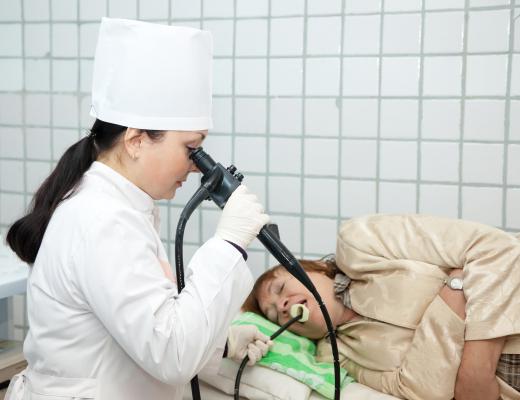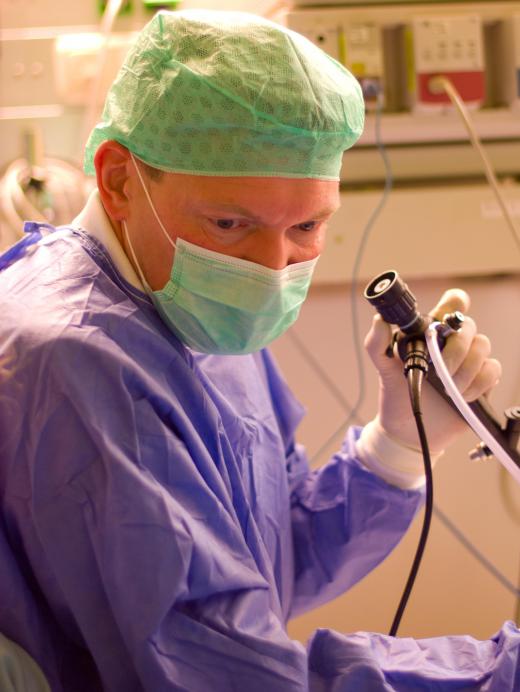What are Fiber Scopes?
Fiber scopes are pieces of equipment that allow the user to see into tight spaces. Typically, fiber scopes contain a long, narrow bundle of extremely flexible fiber optic wires that allow them to fit into opening as small as one-quarter inch (6.4 mm) in diameter. At the beginning of these wires is a single eyepiece, much like that found on a microscope. The end of the fiber optic wires is usually bound with a metal strip to keep the wires from coming loose.
Brian O'Brien and Narinder Kapany invented fiber scopes in the 1950's. O'Brien worked for the American Optical Company, while Kapany worked closely with a number of colleagues at the Imperial College of Science and Technology in London. Using their knowledge of fiber optics, they created a way to use the technology to see into tight spaces.

In the original fiber scopes, the fiber optic strands were individually coated to ensure light did not leak. The image to be viewed was placed at one end seen in its enlarged form on the other end through a wide-angle lens on the eyepiece. These original fiber scopes enabled workers to safely view the components inside nuclear reactors and jet engines.

In 1960, Dr. Basil Hirschowitz used the technology of fiber scopes to create the endoscope. He demonstrated how this useful tool could be gently slid down the throat and used to examine internal organs. His first test was on himself. Once that proved successful, endoscopes became frequently used on patients.
Today, fiber scopes have a number of uses, ranging from machinery to human bodies. They are readily found in hospitals, forensic labs, computer repair firms, computer labs, and even locksmith companies. Fiber scopes can be used to help crack safes, to view inside tight areas on machinery, and to assist with some medical procedures.
As technology advances, the uses for fiber scopes increase, particularly in the medial field. Instead of having to cut into a person, tiny incisions can be made to allow the surgeon to view a person's internal organs, blood vessels, veins, and more. This advancement saves thousands of lives every year.
AS FEATURED ON:
AS FEATURED ON:












Discuss this Article
Post your comments